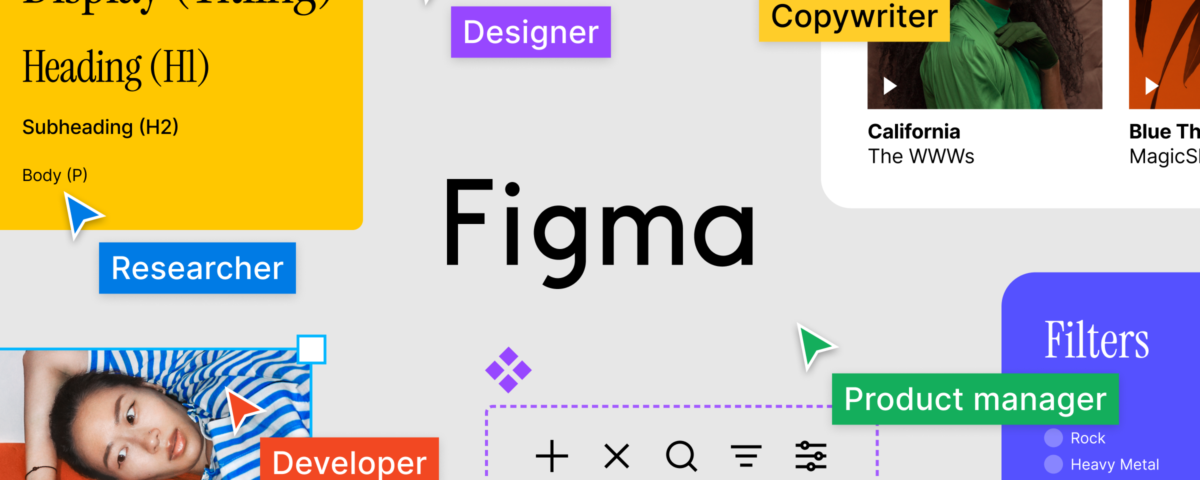Exploring Figma: The Future of Collaborative Design

HTML5 Development: Crafting Modern and Dynamic Web Experiences
May 22, 2024
CSS3 Development: Crafting Modern and Responsive Web Designs
May 22, 2024Exploring Figma: The Future of Collaborative Design
Introduction to Figma
Figma is a cloud-based design tool that is revolutionizing the way designers collaborate and create digital products. Developed by Figma Inc., Figma offers a collaborative platform for designing interfaces, prototypes, and graphics in real-time. With its intuitive interface, powerful features, and cloud-based architecture, Figma has become the go-to tool for design teams and individuals worldwide.
Thank you for reading this post, don't forget to subscribe!The Importance of Figma
Figma is essential for several reasons:
- Real-time Collaboration: Figma’s cloud-based platform allows multiple users to collaborate on the same design file simultaneously. Designers can work together in real-time, share feedback, and see changes instantly, regardless of their location.
- Cross-Platform Compatibility: Figma runs in the browser and is available on both macOS and Windows operating systems. It also offers desktop and mobile apps, ensuring seamless compatibility across devices.
- Design Systems: Figma supports design systems, allowing designers to create reusable components, styles, and libraries. Design systems help maintain consistency and efficiency in design workflows, making it easier to scale and iterate on designs.
- Prototyping and Animation: Figma includes features for prototyping and animation, allowing designers to create interactive prototypes directly within the tool. With its intuitive interface and timeline-based animation editor, Figma makes it easy to bring designs to life.
- Developer Handoff: Figma provides tools for developer handoff, allowing designers to generate code snippets, design specs, and assets for developers. Designers can annotate designs, export assets, and share design specifications, streamlining the handoff process.
Key Features of Figma
Cloud-Based Design
Figma’s cloud-based platform enables real-time collaboration, version control, and access to design files from anywhere with an internet connection. Designers can work together seamlessly without the need for file syncing or manual updates.
Vector Editing and Prototyping
Figma offers powerful vector editing tools for creating shapes, paths, and illustrations. Designers can also create interactive prototypes directly within Figma, defining interactions, transitions, and animations to simulate user flows.
Design Systems and Components
Figma supports design systems and reusable components, making it easy to maintain consistency and efficiency in design workflows. Designers can create libraries of reusable components, styles, and assets to streamline the design process.
Plugins and Integrations
Figma supports a wide range of plugins and integrations that extend its functionality. Designers can install plugins to automate tasks, add new features, and integrate with other tools and services.
Developer Handoff and Collaboration
Figma provides tools for developer handoff and collaboration, allowing designers to share design files, gather feedback, and collaborate with team members and stakeholders in real-time. Developers can inspect designs, generate code snippets, and access design assets directly within Figma.
Figma Workflow
Creating a New File
To start a project in Figma, create a new file and set up the document settings such as canvas size, artboard layout, and color mode. Define the project scope and requirements before diving into design.
Designing Interfaces and Components
Use Figma’s vector editing tools, libraries, and components to design user interfaces, components, and digital products. Start with wireframes or sketches, then refine and iterate on the design until you achieve the desired outcome.
Prototyping Interactions and Animations
Create interactive prototypes directly within Figma by defining interactions, transitions, and animations. Use Figma’s intuitive interface and timeline-based animation editor to bring designs to life and simulate user flows.
Collaborating and Sharing
Share your designs with team members and stakeholders for feedback and collaboration. Use Figma’s collaboration features to work together in real-time, share feedback, and see changes instantly, regardless of your location.
Handing Off to Developers
Generate design specs, assets, and code snippets for developers to implement the design. Use Figma’s developer handoff tools to streamline the handoff process and ensure accurate translation of designs into code.
Tips for Using Figma Effectively
Master Auto Layout and Constraints
Learn and use Figma’s Auto Layout and constraints features to create responsive and adaptive designs. Auto Layout makes it easy to create flexible layouts that adapt to different screen sizes and content.
Explore Plugins and Integrations
Explore and install plugins that extend Figma’s functionality and streamline your workflow. Keep an eye on new plugins and updates to take advantage of the latest features and enhancements.
Use Libraries and Components
Take advantage of Figma’s libraries and components to create reusable design elements. Create libraries of components, styles, and assets to maintain consistency and efficiency in design workflows.
Collaborate and Share Feedback
Collaborate with team members and stakeholders in real-time using Figma’s collaboration features. Share designs
For more information: www.ecbinternational.com


